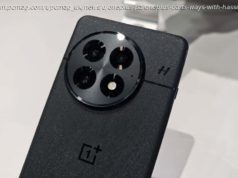A stylish smart ring for Samsung fans
Samsung is helping to usher the relatively nascent category of smart rings into the mainstream with the Galaxy Ring ($399.99). The polished, lightweight, and durable design of this first-generation model makes it seem like the company has been making finger-based fitness trackers for years. With built-in sensors, the Galaxy Ring tracks your activity while you’re awake and the restfulness of your sleep, and uses Samsung’s Galaxy AI to deliver a daily Energy Score to help you quickly gauge your readiness and personalized tips to improve your wellness. The Galaxy Ring is a stylish choice for health tracking if you have an Android phone, though its best features are reserved specifically for Samsung Galaxy handsets. For everyone else, the Oura Ring Generation 3 ($299.99, plus a $5.99 monthly membership) remains our Editors’ Choice for its superior accuracy, wider phone compatibility, and lower up-front cost.Design and Specs: A+ Aesthetics, With Power for Days
The Galaxy Ring requires a phone running at least Android 11 or newer, and you need a Samsung phone to access the full range of its features such as Galaxy AI insights. The Oura Ring, by contrast, offers much more flexibility with support for both Android and iOS.
While $100 more expensive than the Oura up front, the Galaxy Ring doesn’t require a subscription for anything in its app. Most of Oura’s best features are gated behind a $5.99 monthly membership fee, which also includes guided meditations. Without a membership, the Oura Ring offers only basic health metrics and three simple daily scores (Activity, Readiness, and Sleep).
The Galaxy Ring comes in black, silver, or gold in sizes 5 through 13, but it runs small. Samsung provides a sizing kit for $10, which gives you $10 toward the cost of a ring. Samsung recommends wearing the Galaxy Ring on your index finger, if possible. I had to wear the biggest size on my ring finger for testing because it wouldn’t fit on my index or middle finger.
The Galaxy Ring’s impeccable design extends to its look, feel, size, and even its case. I wore it for over a week, and it’s the most comfortable wearable I’ve ever tested. I regularly forgot I had it on. It’s small and light, measuring 0.28 inches wide and 0.10 inches thick and weighing between 0.08 and 0.11 ounces, depending on the size. For comparison, the Oura Ring measures 0.31 inches wide and 0.10 inches thick and weighs between 0.14 and 0.21 ounces. The more streamlined design of the Galaxy Ring is an advantage over the bulkier Oura.
The outside of the Galaxy Ring is smooth, with a slightly concave shape to the top. The bottom has a small notch meant to face your palm so you can easily make sure it’s oriented correctly. The bottom of the interior holds the sensor notches and green and red LEDs that form a photoplethysmography (PPG) sensor to detect blood circulation and oxygenation. Under the surface, the Galaxy Ring also has an accelerometer and a skin temperature sensor, forming a sensor trio that matches the Oura Ring Gen 3. It uses Bluetooth 5.4 to communicate with your phone.
Despite being small and light, the Galaxy Ring is durable. It’s made of Grade 5 titanium, has an IP68 rating for water and dust resistance rating, and a 10ATM water pressure rating, so it can survive in calm water up to 328 feet deep.
Battery capacity for the Galaxy Ring varies based on size, from 18mAh in the size 5 ring to 23mAh in the size 13. In our tests, the biggest size powered through 6.5 days on a charge, just shy of Samsung’s seven-day maximum battery life estimate. At least with the biggest size, you’ll only have to charge it roughly once a week and can wear it consistently the rest of the time. The Oura Gen 3 similarly lasted about six days on a charge in our tests, while the Fitbit Charge 6 ($159.95), a wrist-based tracker, lasted four to five days between charges, depending on display settings.
Battery life is one huge advantage the Galaxy Ring offers over the company’s flagship smartwatch, the $299.99 Galaxy Watch 7, which lasted just 22 hours with the always-on display enabled.
The Galaxy Ring ships with a cleverly designed translucent charging case that holds 361mAh battery capacity. The case can recharge the ring 1.5 times before needing to be plugged in. According to Samsung, the ring takes 80 minutes to fully recharge in the case, which matches my experience testing.
The ring’s notches only allow it to fit in the charging case one way. With the ring in place, you can press the central button on the case, and a circular indicator light will show how much charge the ring has left. Without the ring in place, the same button will show the remaining charge in the case.
To quickly check the ring’s battery status without pulling out your phone, just take it off your finger. The LEDs on the inside will blink green if the charge level is at least 15% or red if it is less than that. Features: Holistic Health Tracking
While you’re awake, the Galaxy Ring tracks your activity, heart rate, menstrual cycle, steps, and stress. It can alert you via your phone if it senses a high or low heart rate, or if you’ve been inactive for a while. It tracks walks and runs automatically, and it can monitor your heart rate and workout duration for other exercises if you start tracking them from your phone. In comparison, the Oura Ring automatically tracks more than 40 different exercises.
While you sleep, the Galaxy Ring tracks blood oxygen, heart rate, nighttime movement, respiration, skin temperature, sleep latency, and sleep stages. With a nearby paired Samsung phone, it can also track snoring.






